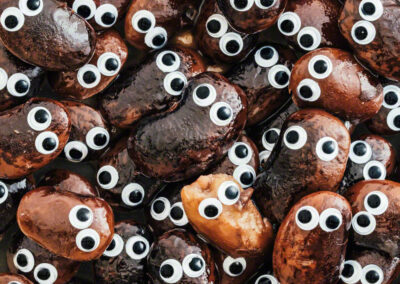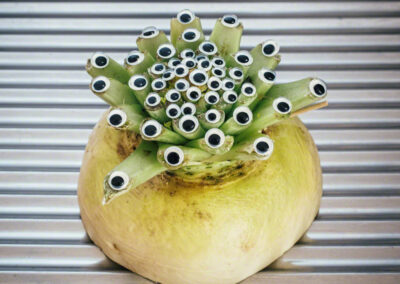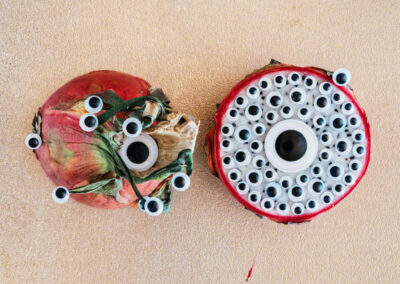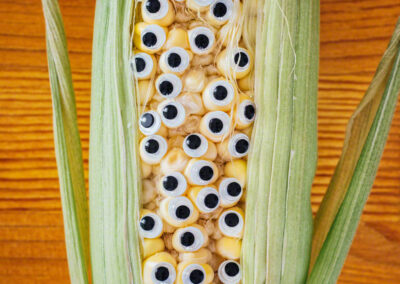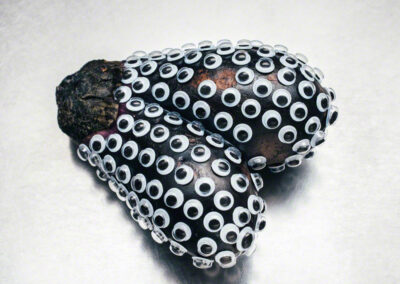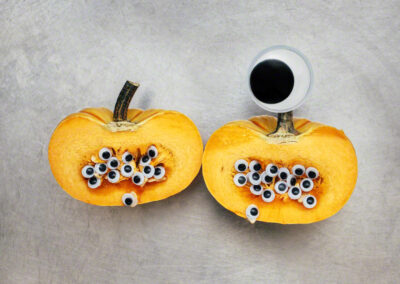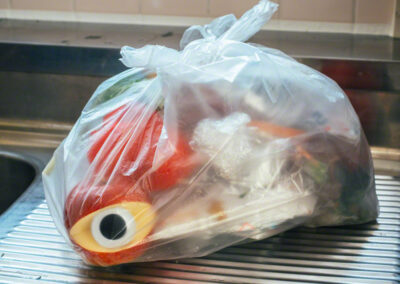Silent voice
これらは、日本人である僕が幼少期の食卓で周囲の大人達からたびたび言われてきたことである。
しかしどうだろう・・・。今日では、日本の食料自給率は先進国の中で最低水準となっている一方、人口1人当たりの食品廃棄物発生量は世界有数であり、アジア圏ではワースト1位となっている。
僕はその国で賞味期限が切れたり、色や形といった外見が悪いという理由によって捨てられゆく命の声に耳を傾けた。
本プロジェクトでは、被写体となるそれらにおもちゃの目を加えることによってキャラクター化をし、消えゆく命の可視化を試みている。
“Don’t treat food poorly,” or “leaving food uneaten is wasteful.” These are words that are commonly spoken to children by adults at the dining table, the same that were spoken to me as a Japanese child. But are these words truly so … In this modern age, while Japan is among the lowest-ranked developed nations in terms of food self-sufficiency, it is also among the world’s leaders in terms of producing food waste volume per person. I lent an ear to hear the voices of the lives of food that were sacrificed for the sake of products that went uneaten and wasted in Japan–due to having elapsed past their expiration dates, or perhaps because they were thrown out since they weren’t the right color or shape. This project involves the placing of toy eyes upon the subjects (items of food waste) to transform them into characters–an effort to visualize the lives which vanish in the process of discarding food.
Afterword
This project focuses on photography of toy eyes affixed to food that has been thrown away due to problems with its external features such as shape or color or because it has passed its expiry date. I believe that the perspective offered using toy eyes will provoke consumers to consider the way that we humans abandon “life” unconsciously and embody these abandoned things with a sense of meaningful existence that consumers can feel more strongly. In most cases, I think people tend to identify more closely with and empathize more with something that has eyes or resembles some sort of face.
The catalyst for this project first appeared in 2019 with a story that I heard from my wife when she was working in a food processing facility. She was telling me all about how so much food that was perfectly edible was thrown away each day at the facility. She said that the main reasons for discarding food are printing mistakes on packaging or unsightly blemishes to the food’s appearance that can only be seen by a trained eye. According to my research, this seems to be the case in many food processing facilities across Japan. Because of the importance in Japan of beautiful packaging, appearance and color of vegetables and other foodstuffs, and convenience of distribution, there are strict standards and rules to ensure that shapes are regular and size is uniform. Items that do not meet these rules and standards are often discarded.
Japan’s rate of food self-sufficiency is one of the lowest among developed countries these days, the country’s amount of food waste per capita is one of the highest in the world. Unfortunately, this means Japan is one of the most wasteful countries in the world when it comes to food.
